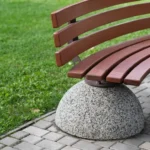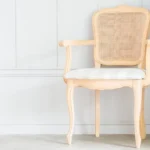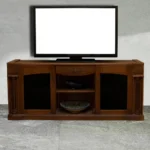Embroidery machines are a valuable tool for hobbyists and professionals alike. These machines have revolutionized the way embroidery is done, speeding up the process and allowing for intricate designs that would take hours by hand. However, like all machinery, embroidery machines are not immune to issues. Troubleshooting these machines can be daunting, especially for beginners. In this guide, we’ll explore common issues with embroidery machines and provide a troubleshooting table to help you fix them efficiently.
Introduction: Why Troubleshooting Is Important for Embroidery Machines
When an embroidery machine malfunctions, it can disrupt your workflow, cause frustration, and even lead to damaged projects. Whether you’re dealing with thread breaks, tension issues, or needle jams, understanding how to troubleshoot your machine can save both time and money. Having a well-organized troubleshooting guide helps machine operators quickly diagnose and correct problems without needing professional assistance every time something goes wrong.
This article covers a variety of Embroidery Machine Issues, from minor inconveniences to more significant mechanical issues, and offers step-by-step solutions to ensure your machine runs smoothly.
Understanding Common Embroidery Machine Problems
Before diving into specific troubleshooting steps, it’s essential to familiarize yourself with some of the most common issues encountered when using an embroidery machine. Understanding these will make it easier to spot them when they occur.
Thread Breaks
One of the most frustrating issues with embroidery machines is frequent thread breaks. Thread can snap for various reasons, including incorrect tension settings, poor-quality thread, or needle problems. When thread breaks frequently, it disrupts your design and can lead to wasted material and time.
Tension Problems
Tension issues are another common problem that affects stitch quality. If the upper or lower thread tension is not set correctly, your stitches can become uneven, leading to poor design outcomes. Recognizing and adjusting tension is crucial for producing professional-quality embroidery.
Skipped Stitches
When your machine skips stitches, it leaves gaps in your design. This issue can result from improper needle positioning, dull needles, or poor-quality fabric. Skipped stitches compromise the integrity of the design, making it look incomplete.
Bobbin Issues
The bobbin plays a crucial role in forming stitches. If there are issues with the bobbin, such as it being wound unevenly or incorrectly inserted, the machine will not stitch correctly. A loose or jammed bobbin can cause major disruptions in embroidery projects.
Needle Breakage
Frequent needle breakage is another issue embroiderers face. This can result from using the wrong needle type for your fabric, excessive speed, or poor needle quality. Broken needles can damage your fabric and delay project completion.
Troubleshooting Table for Embroidery Machines
The following table outlines the most common embroidery machine problems, their causes, and step-by-step solutions to resolve them. Bookmark this page or print out the table for quick reference when working on your embroidery projects.
| Problem | Possible Cause | Solution |
| Thread Breaks | Incorrect tension, poor thread quality | Check tension, switch to higher-quality thread, rethread machine |
| Skipped Stitches | Dull needle, incorrect needle position | Replace the needle, and ensure it’s inserted properly |
| Tension Issues | Improper upper/lower thread tension | Adjust thread tension using the machine’s tension controls |
| Bobbin Issues | Uneven winding, incorrect insertion | Rewind the bobbin, check for proper insertion |
| Needle Breakage | Wrong needle size, high speed | Use the correct needle size, slow down the machine speed |
| Fabric Jamming | Incorrect hooping, fabric too thick | Re-hoop the fabric, check fabric thickness compatibility |
| Thread Bunching | Tension too loose, incorrect threading | Tighten tension, rethread the machine |
| Motor Not Running | Electrical issue, The machine overheated | Turn off the machine, let it cool, check the power supply |
| Uneven Stitches | Tension imbalance, bobbin issues | Re-calibrate tension, check bobbin settings |
| Design Misalignment | Fabric not hooped correctly, machine bump | Re-hoop fabric tightly, ensure the machine is stable during stitching |
Detailed Solutions for Embroidery Machine Issues

How to Fix Thread Breaks
Thread breaks can ruin your embroidery project, but the cause is often easy to fix. The first step is to check the thread path and ensure that the thread is correctly inserted through the tension discs and guides. Using poor-quality threads can also contribute to this issue. Always choose a thread that matches the fabric and machine specifications. If the problem persists, adjust the thread tension or try using a different needle type.
Resolving Skipped Stitches
Skipped stitches are a common frustration, especially when working with thicker or more intricate designs. This issue is often caused by a dull needle or improper needle installation. Make sure to change needles regularly, especially after working on a large project. Check the position of the needle in the machine – it should sit firmly and be fully inserted into the holder. Lastly, ensure you’re using the right needle for your fabric type, as using a universal needle for specialized fabrics like denim or leather can lead to skipped stitches.
Tension Issues: How to Adjust
Tension problems can lead to both loose stitches and puckering. If the stitches are too loose, the top thread tension is likely too low. Tighten it gradually, testing after each adjustment. For puckered fabric, check both the top and bobbin tension. Most embroidery machines have a dial or control setting for adjusting tension, making it a straightforward process.
Addressing Bobbin Problems
A poorly wound bobbin can lead to issues like uneven stitches or thread bunching. If you notice problems with your stitches, start by checking the bobbin. Ensure it’s wound evenly and placed correctly in the bobbin case. Sometimes, simply rethreading the bobbin can solve the problem. Additionally, make sure you’re using the right type of bobbin for your machine model.
Needle Breakage: Prevention and Solution
Frequent needle breakage can be avoided by using the correct needle type and size for the fabric you’re working with. For thicker fabrics like canvas, denim, or leather, choose a heavier-duty needle. Also, be mindful of your machine’s speed. Running your machine too fast, especially with delicate materials, increases the risk of needle breakage.
Maintenance Tips to Prevent Common Issues
Maintaining your embroidery machine is essential for its longevity and performance. Regular cleaning, oiling, and proper storage can prevent many of the common problems outlined above.
Clean Your Machine Regularly
Dust, lint, and thread fragments can build up inside your machine, leading to malfunctions. Clean your machine after each use or project, especially around the bobbin case and the thread path. Many machines come with small brushes designed for cleaning hard-to-reach areas.
Oil the Machine
Your machine’s manual will specify how often you should oil it. Oiling is critical for smooth operation, as it reduces friction and prevents parts from wearing out prematurely. Use machine-specific oil and apply it only where instructed.
Keep It Covered
When your embroidery machine is not in use, keep it covered to prevent dust from accumulating. Most machines come with a cover, or you can purchase one separately.
Conclusion: Troubleshoot with Confidence
Embroidery machines, like any other piece of equipment, can experience mechanical issues over time. However, many problems can be resolved quickly with basic troubleshooting techniques. By understanding common Embroidery Machine Issues and referring to this troubleshooting table, you can address issues efficiently and get back to your projects faster. Regular maintenance and careful attention to thread, tension, and needles will also help minimize the likelihood of problems occurring.









